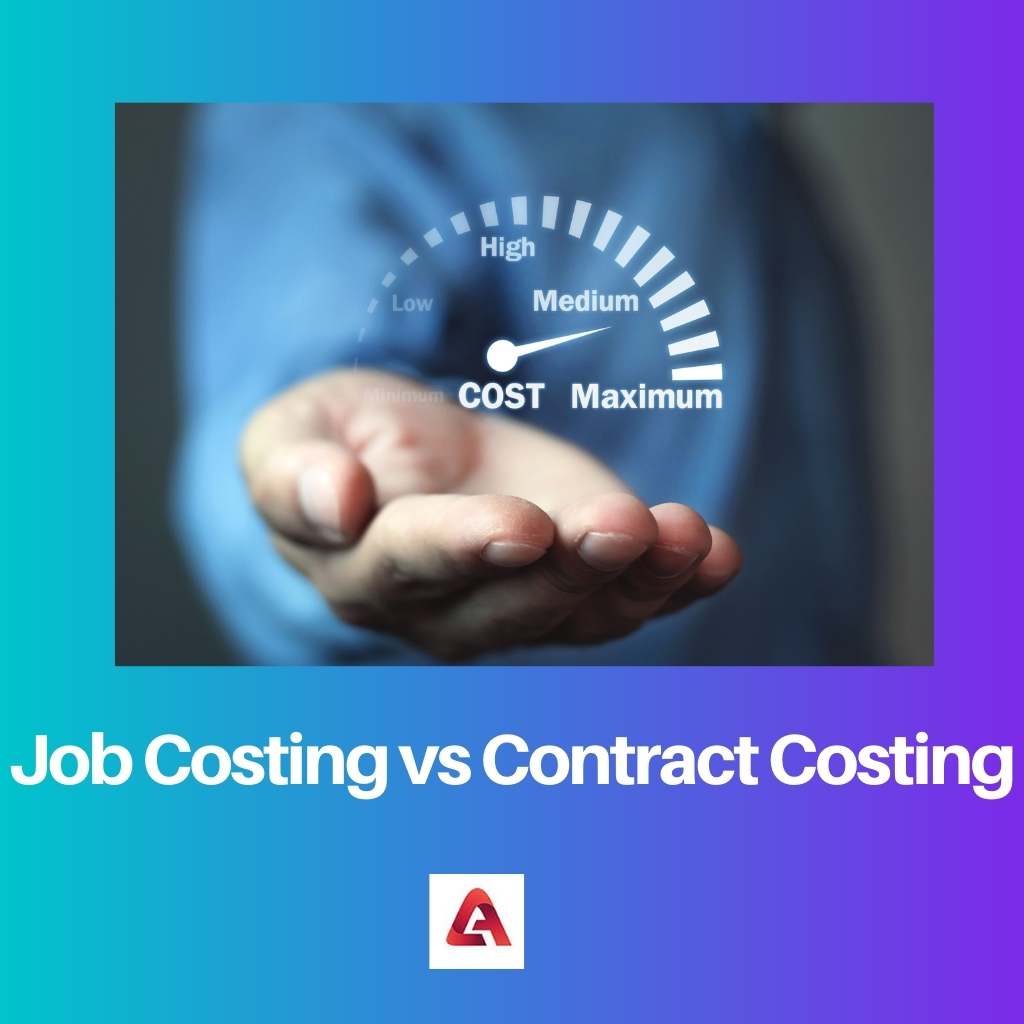
There are different kinds of businesses; hence, the costing method also differs. Two such costing methods are Job Costing and Contract Costing.
Job Costing is also known as Job Order Costing and is the total cost of materials involved in a small-scale project, which includes the resources, overhead requirements, and labor work. Contract Costing is the total cost of materials used in large-scale construction projects like buildings, bridges, and roads.

This method is mostly used for small-scale jobs in manufacturing sectors such as printing press, garages, repair workshops, and foundry, etc. Job costing can be done in very little time.
This method is mostly used for large-scale projects in the construction sector, such as dams, houses, buildings, etc. Contract costing is done in a planned manner and requires an extended period.
| Parameters of Comparison | Job Costing | Contract Costing |
|---|---|---|
| Purpose | Costing system of specific customer orders. | Costing system where a big project is undertaken. |
| Costing Industry | Manufacturing of products. | Construction works. |
| Work Location | Company’s premises. | Customer’s chosen work site. |
| The Scale of Work | Involves only a small amount of work. | Involves large-scale construction projects. |
| Time | Work can be completed in a short time. | Work is completed in an extended period. |
Job costing is defined as the total cost of materials, including all the resources, labor work, and overhead requirements for a small-scale project. It is also known as Job Order Costing.
Also Read: Interim Dividend vs Final Dividend: Difference and ComparisonManufacturers, marketing agencies, advertising agencies, consulting firms, health care organizations, etc prefer this method.
The company’s expenditure of finances and resources for job costing is also less, making this costing method suitable for small organizations and product manufacturing companies.
Contract Costing is defined as a type of costing method which used in large-scale constructional activities such as projects, including buildings, roads, bridges, etc. The person who takes the contract is called the Contractor, and the person from whom the contract is taken is called the Contractee.
The agreement of contract spans over a long time, more than a year. Contract costing involves accounting for many activities including project completion, production process, percentage margin, time, materials, and profit margin.
There are namely five features of contract costing, including materials, wages, direct charges, bill of sub-contractors, and certificate of completion. The work experience gained by an individual in contract costing is considered extremely valuable in this field.
I’ve put so much effort writing this blog post to provide value to you. It’ll be very helpful for me, if you consider sharing it on social media or with your friends/family. SHARING IS ♥️